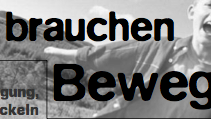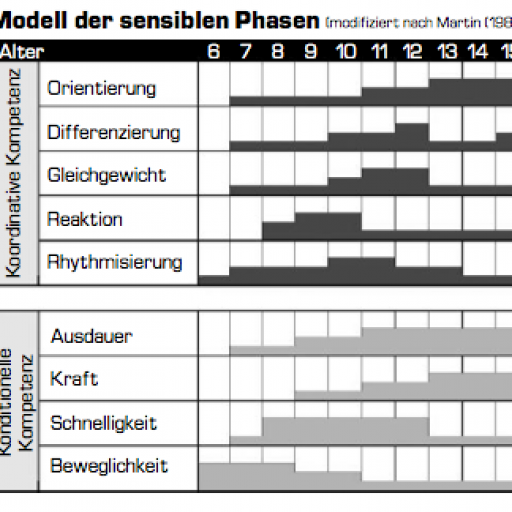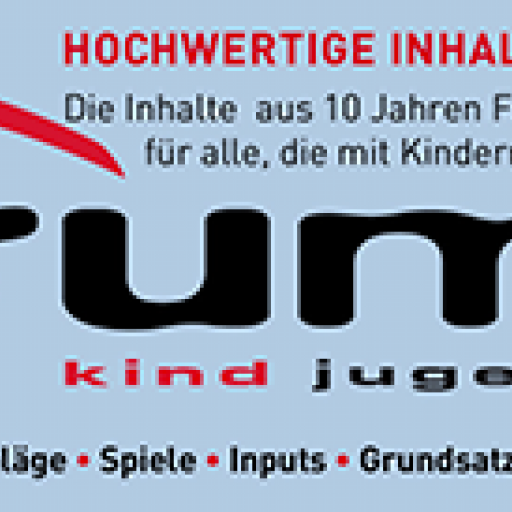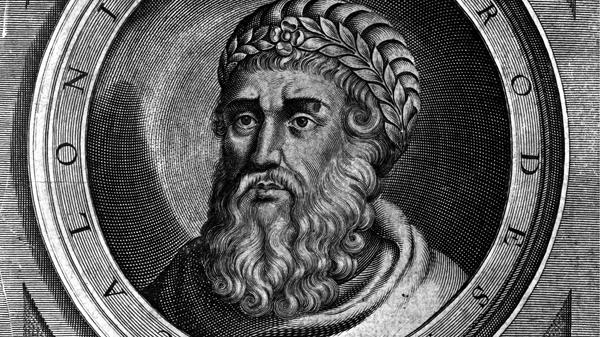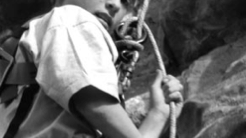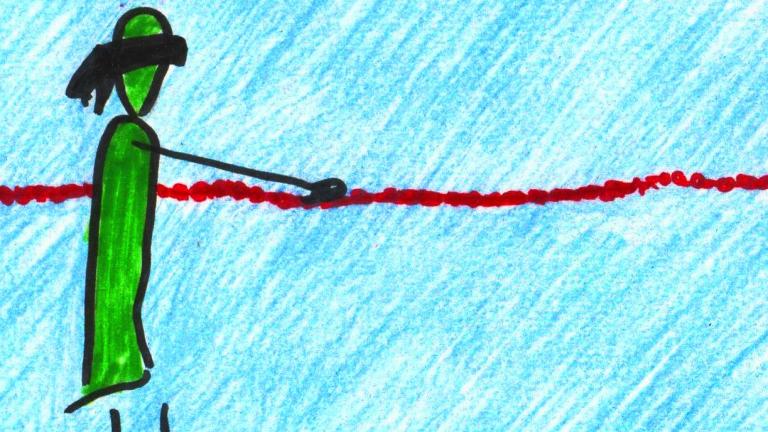Children need exercise to develop healthily. Physical activity not only promotes motor skills, but also has an impact on all areas of development. In youth work we canmake an important contribution to counteract the increasing lack of exercise in our society.
Exercise and development
Physical activity in childhood is essential for healthy development and has far-reaching effects on later life. It is not just about height growth or the development of physical skills such as coordination or stamina. Exercise also has an impact on academic performance, social and self-competence.
Coordination
Coordinative skills are skills that enable one to perform a movement task as well as possible. These include balance, reaction, (spatial) orientation, rhythm (e.g. bouncing the ball in a certain beat) and differentiation (dosing the use of force). Children who have good coordination skills move more safely and are therefore less at risk of accidents. In addition, new movements (e.g. a new sport) can be learned more quickly.
Condition
Condition is an umbrella term and stands for endurance, strength, speed and agility. Children (and adults, too) who have good stamina tire less quickly and can concentrate longer. Stronger children are at less risk of injury and have fewer postural problems.
School performance
Various movement experiences encourage the formation of connections between brain cells, which has a positive effect on learning. Those who have good physical endurance can also perform mentally for longer periods of time.
Self-confidence and emotions
Children should be given age-appropriate movement tasks that challenge but do not overwhelm them. A sense of achievement inspires and goes a long way towards boosting self-confidence. Physical activity has a positive effect on the psyche and emotional balance. In sport, emotions can be acted out in a controlled way and a constructive way of dealing with success and failure can be learned.
>
Integration
Exercise usually takes place in groups. This is where children can experience integration. Children with strong motor skills find it easier to connect to a group and are less likely to become outsiders.
Physical development
Children are not small adults. It is important to take into account the specifics of each developmental stage when engaging in sports activities. Physical activity tasks must be appropriate for the age of the children. The following is an overview of the developmental stages and their opportunities for promoting physical skills. The age limits given are indicative. The speed of development can vary greatly, especially when comparing girls and boys
Early childhood: 0-6 years
The first year of life is marked by an eye-popping gain in length and weight and by tremendous brain development. It is also the time of most intense movement maturation, especially in the area of gross motor skills. The child learns to sit, stand and walk, among other things. In the early years (2-6 years), running, climbing stairs, hopping and climbing are added. Balance plays an important role here. Motor skills gain confidence and movement coordination becomes more refined. Thus, the child becomes capable of learning to write.
Early school age: 6-9 years
The child has undergone the first gestalt change (change in body proportions) from toddler to school child. The brain has reached virtually its full size, but the building of connections between brain cells continues. Children at this age have a expressed urge to move and a high motor learning and performance capacity. Movement sequences can be learned, but not yet well fixed, which requires frequent repetition. The movement tasks should be varied and playful. The high motivation of the children should be taken up and maintained. Until the age of ten, the development of boys and girls runs parallel.
Late school age: 10-12 years
At this age, children have very good motor learning (coordinative skills), it is also called the "golden learning age". More and more complex movement sequences can be learned (especially by imitation) and consolidated. The pronounced need for movement is still present, the children are ready for action, courageous and very competitive.
>
The graph (above) shows at which age which competencies can be trained (the thicker the bar the more trainable).
The training of coordinative skills is clearly in the foreground at school age. But the conditional factors are also important. A school-age child should be able to run his or her age in minutes without stopping. The endurance training should be playful, varied and of low intensity. Intensive loads of short duration (anaerobic range) should be avoided, as this creates lactic acid in the muscles, which can be broken down less quickly in children. Speed and strength can be improved considerably at this age. However, actual strength training with additional weights is not carried out, as this can damage the musculoskeletal system. The body weight is primarily used as a load when climbing, shimmying, pull-ups, obstacle gymnastics, etc.
Pubescence
Girls: 11/12 - 13/14 years Boys: 12/13 - 14/15 years
The sharp increase in height and weight initially brings a decrease in coordinative ability. Movements are less precise. In pubescence, the conditional skills are therefore in the foreground. The endurance performance can be increased specifically. Especially in boys, there is a marked increase in strength. Agility must be maintained and improved.
The urge to move and the willingness to perform decrease rapidly, especially in girls. The young people are usually very preoccupied with themselves. As leaders, it is important to support and motivate the young people.
Adolescence
Girls: 13/14 - 17/18 yrs. Boys: 14/15 - 18/19 yrs.
The balanced body proportions, stabilized psyche, advanced mental development and improved observational skills usually have a beneficial effect on learning. The resilience is nearly as high as in adults. Also in this stage of development, the improvement of the condition is in the foreground, as well as the maintenance of the coordinative skills.
A lack of movement and its consequences
The environment of children has changed a lot in recent years. Increasing traffic makes the way to school more and more dangerous. As a result, parents are driving their children to school. Escalators and lifts are readily used. Often, especially in cities, there is a lack of space to move around. This encourages media consumption (television, computer games, etc.). Valuable movement time is lost as a result.
Some facts about the current situation in Switzerland:
- 20% of children are overweight.
- One in five children complain of occasional or chronic back pain.
- Half of all six-year-olds can no longer do a forward roll (somersault).
- The leading cause of death among ten- to fourteen-year-olds is bicycle accidents.
Many children are no longer able to perform the coordinative feats to safely participate on bicycles in traffic. Children with poor coordination generally move around unsafely and are anxious. As a result, they become less confident and even more inactive. Lack of physical activity is a major cause of obesity, poor posture, osteoporosis (bone loss), and cardiovascular disease, which continue into adulthood. The impact on health care costs will be severe.
What can we do?
As is so often the case, adults play a crucial role as role models. First and foremost, these are certainly the parents. But as leaders in youth work, we also have a not inconsiderable influence on children's physical activity behaviour. Our programmes offer a huge opportunity to counteract the development described above! In this respect, we also bear some responsibility for the children entrusted to us. On the one hand, by being moving role models ourselves, on the other hand, by incorporating movement times specifically into the program. Get outside, in the woods or in the gym! Build rope bridges! Go on hikes, orienteering, cross-country games! Let them try a variety of sports! Set the children challenges and let them experience their limits! Why not dedicate a quarter entirely to exercise and get around in a different way each time?
Youth and Sport (Y+S) is dedicated to promoting sport in children and young people and makes a significant contribution to promoting physical activity. Sport should not simply be compulsory in our camps so that we receive financial support. We are making an important contribution to the development of children!
We want the children to be active themselves in our programs. In doing so, we are sending a message against the passivity and consumerism of today's society. It will not always be easy to reconcile the different prerequisites of the children, to motivate them or to convince anxious parents. But for the children it will certainly be a great gain for their future life.
- Content and pictures: Forum Kind Heft 2/06, Seiten 5 + 6. Kinder brauchen Bewegung um sich motorisch gesund entwickeln zu können. © Copyright www.forum-kind.ch
- Author: Susanne Meyer
Content may be automatically translated. Help improve the quality of the translation with your editing!

